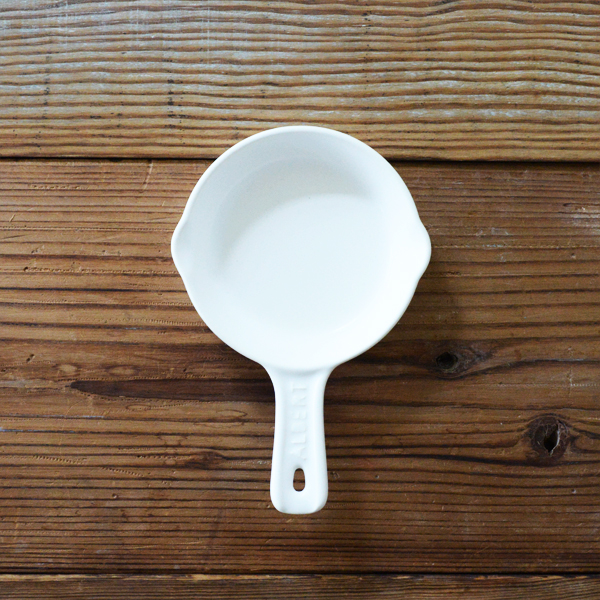当日発送について
平日(営業日)の12時までにご注文が完了したご注文で、以下の条件に該当するご注文を当日配送いたします。
◯ご注文いただいた商品の在庫がすべてある場合。
◯お支払方法がクレジットカード決済か代引きの場合。
◯定休日はではない。
※受注状況や確認事項の有無などにより、お時間をいただく場合がございます。
定休日のご案内
土日祝日、お盆、年末年始などは出荷業務をお休みいたします。
Now Loading...
平日(営業日)の12時までにご注文が完了したご注文で、以下の条件に該当するご注文を当日配送いたします。
◯ご注文いただいた商品の在庫がすべてある場合。
◯お支払方法がクレジットカード決済か代引きの場合。
◯定休日はではない。
※受注状況や確認事項の有無などにより、お時間をいただく場合がございます。
土日祝日、お盆、年末年始などは出荷業務をお休みいたします。

卵料理っておいしいですよね。
オムレツ、卵焼き、目玉やき、スクランブルエッグ、ゆで卵、…色々な食べ方がありますが
目玉焼きを作るならアルバートのエッグパンがおすすめです!
フライパンで作るのとはまた違った良さがあるんです。
フライパンで作ると卵が広がっていびつな形になったりしませんか?
アルバートのエッグパンはホテルででてくるようなちょっと厚みのある目玉焼きを楽しめます。
まんまるで厚みのある目玉焼きがあるだけで朝ご飯がとても贅沢なものに感じられるから不思議ですよね。

こんな風に一人分をテーブルに置けるのもフライパンとは違うエッグパンのいいところ。
一人分ずつ作れるのでお皿に盛りつける際に半熟の黄身が崩れてしまって…なんてこともなくそのまま熱々をいただけます。
ポットマットと組み合わせると可愛らしさが増しますね。
小さくて可愛らしいだけでなく、機能性も考えられているんです。
こちらの持ち手。
短くて持ちにくいのでは?と思われるかもしれませんが
ただまっすぐになっている訳ではなく、持ちやすいように裏にくぼみがあります。
指が引っかけられる部分があると、調理の時も運ぶ時にも安心できますね。
さらに、左右どちらからでも注げるようになっています。
ソースなどを作って別の器に入れる時、わざわざ持ち替えることなく自然な流れで注げます。
使う人をおもって、食事を楽しんでほしいという思いがデザインから伝わってきます。
可愛いだけじゃなく、使いやすい物はずっと大事に使っていきたいなと思えますよね。
目玉焼きだけでなくケーキやクリームブリュレなどのデザート作りでも使えます。
おかし作りは丸や長方形などシンプルな型が多いですよね。
アルバートは取手や「ARBERT」の凸文字がアクセントになっています。
こんな風にデザートがでてきたら、カフェみたいでおやつの時間がさらに楽しくなります。
オーブン、直火対応なのでスイーツ作りの幅も広がります!
最近はアヒージョを作ってみたいな、と思っています。
フライパンだとどうしてもたくさんのオリーブオイルが必要ですが、アルバートだと少ない量で
調理できるので嬉しいです。
今まで持っていなかった形状やサイズ感の器が加わると、新しい料理に出会えたり、新しいテーブルコーディネートを見つけたり、発見がたくさんありますよ!
小さくてかわいいエッグパン、家族分揃えるのもおすすめです。
色は黒、茶、白の3色あります。